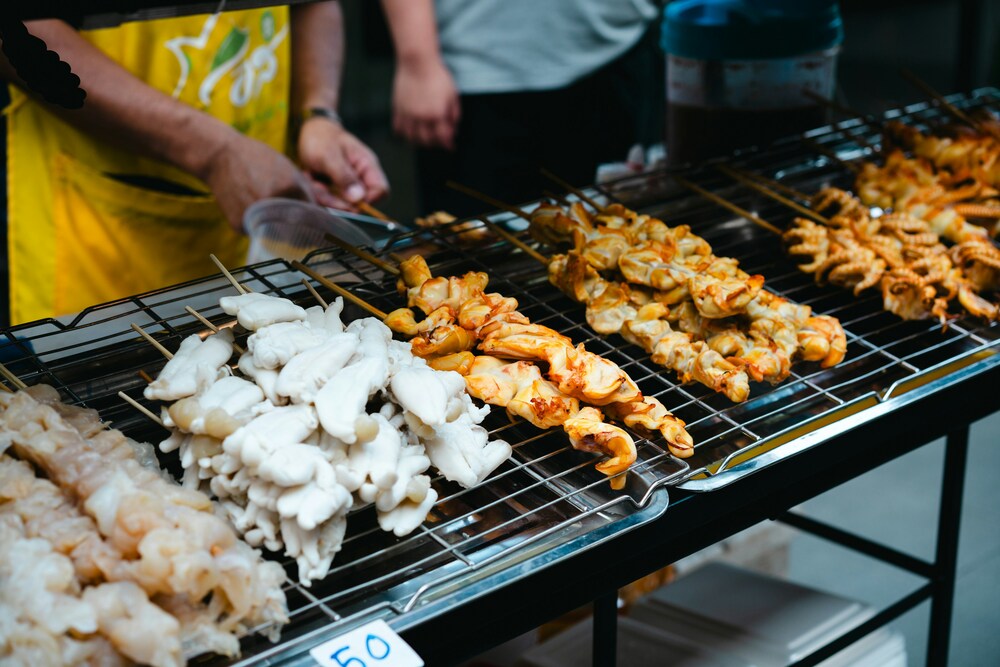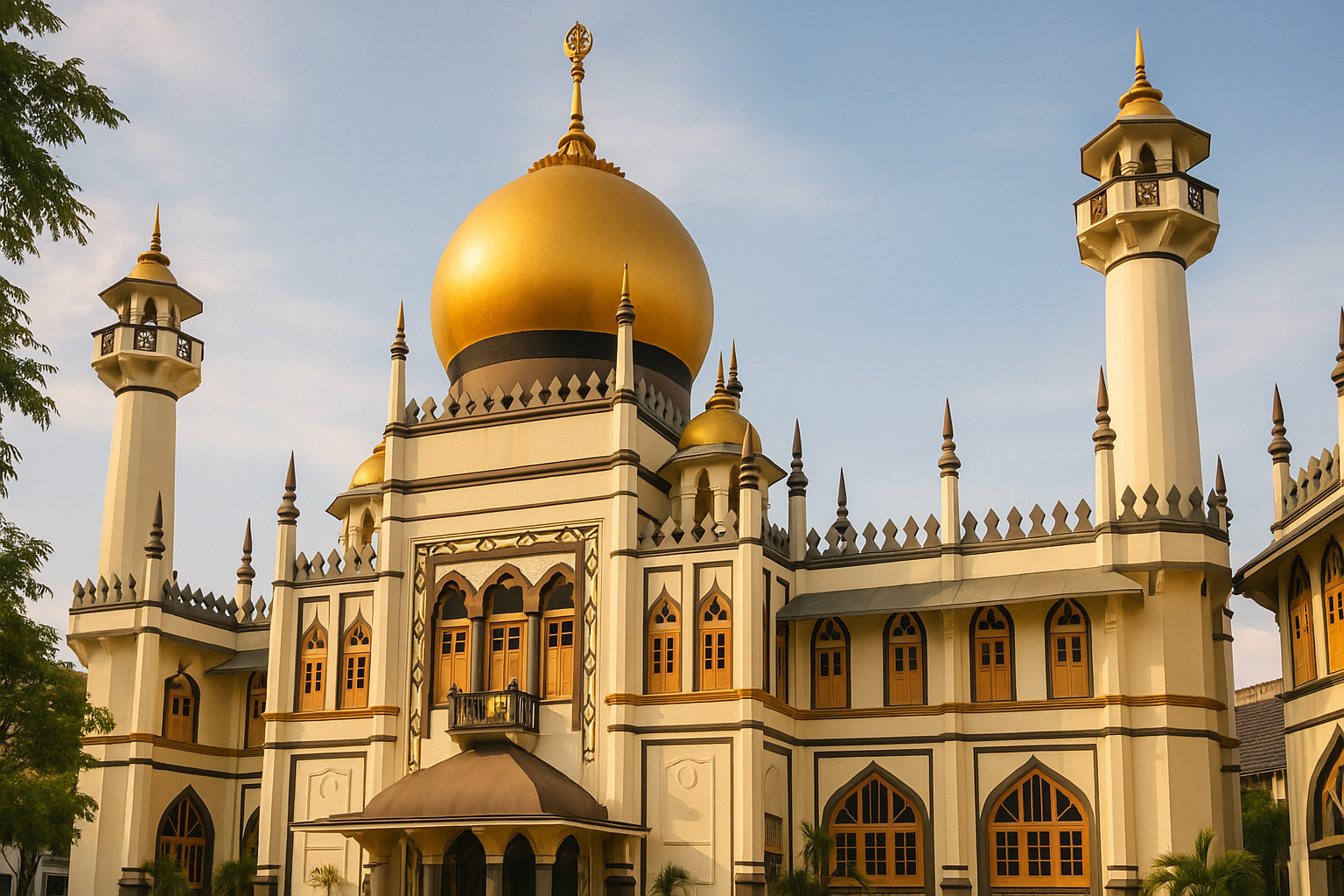
To understand Singapore, you must first taste it. More than a collection of recipes, the Singapore food culture is a testament to the island’s history as a global crossroads and cultural melting pot.
This culinary landscape is a vibrant mosaic, reflecting the Chinese, Malay, and Indian communities that have each left an indelible mark on the food scene. Every meal tells a story of adaptation and shared heritage.
This is a journey into the heart of Singapore’s food scene, a flavourful exploration of how multicultural cuisine not only nourishes its people but also celebrates a rich and complex culinary heritage.
A Melting Pot of Flavours: Historical Roots

Singapore’s journey to becoming a food paradise began when it attracted immigrants from across Asia. Chinese migrants introduced noodle dishes and stir-frying techniques, bringing with them a love for pork and rice. Malay settlers, the original inhabitants, brought their mastery of spices, grilling, and cooking with coconut milk. Indian migrants arrived with their complex spice blends, creating fragrant curries and flatbreads.
Over time, these culinary worlds began to merge, giving birth to a unique Singaporean cuisine. This intermingling created entirely new dishes, most notably the exquisite Peranakan food, a fusion of Chinese ingredients and Malay cooking techniques. This rich history is the bedrock of the nation’s food culture, creating a culinary tapestry unlike any other in the world and cementing its reputation for delicious food.Singapore as the Ultimate Food Centre

To truly appreciate Singapore’s multicultural fabric, you need to taste it. Each community offers iconic Singaporean dishes that are more than just satisfying meals; they are expressions of culture and history, often found in humble food courts and bustling hawker centres.
Chinese Food Favourites: Hainanese Chicken Rice and Chilli Crab

The Chinese community has contributed a vast array of local dishes. Hainanese chicken rice is a perfect example of culinary elegance. Tender steamed chicken is served with fragrant rice cooked in rich chicken broth, garlic, and pandan leaves.
One of Singapore’s most iconic dishes, Chilli Crab, also has its roots in the Chinese culinary tradition. This dish features fresh crab cooked in a rich, sweet-spicy tomato and chilli-based sauce, often mopped up with fried mantou (buns).
Another beloved staple is Char Kway Teow, a smoky, savoury stir-fry of flat rice noodles with prawns, cockles, and chinese sausage in a dark soy sauce.
For a hearty option, Bak Kut Teh, a peppery soup made from simmering pork bones and spices, is a favourite. Dishes such as yong tau foo showcase traditional Chinese preparation by using fish paste as a filling for tofu and vegetables, highlighting authentic flavors.
Malay Food Traditions

Malay dishes are characterised by their aromatic and often spicy flavours. Nasi Lemak is a quintessential breakfast, featuring fragrant rice cooked with coconut milk and pandan leaves. It is served with a fiery sambal chili, fried anchovies, and often a side of fried chicken. Another must-try is Beef Rendang, a slow-cooked dry curry where beef is simmered for hours in a spice mixture until unbelievably tender. Malay cuisine often features grilled meat and is a delight for meat lovers.
Indian Cuisine Singapore

The vibrant colours and bold flavours of Indian food are impossible to miss. Roti Prata, a crispy Indian flatbread, is a national obsession, traditionally eaten for breakfast but enjoyed any time of day. It is typically served with a fish or mutton curry. For a hearty meal, Fish Head Curry is a uniquely Singaporean creation, blending authentic South Indian cuisine spices with a whole fish head in a tangy, sour tamarind sauce.
Peranakan Dishes

Peranakan food represents the pinnacle of cultural fusion. The iconic Laksa is a perfect example: a spicy noodle soup with a creamy coconut cream base. This Peranakan dish often uses thick rice noodles and is topped with prawns, fish balls, and cockles. Another classic is the oyster omelette, a savoury pancake made with eggs, starch, and fresh oysters, fried to crispy perfection.
For dessert, traditional treats like ice kacang are often finished with a generous drizzle of condensed milk, which acts as a creamy topping that enhances both the sweetness and texture, making the dessert more indulgent and flavorful.
Hawker Centres: The Nation’s Dining Room

No discussion of Singaporean food culture is complete without paying homage to its hawker centres (hawker center). These bustling, open air venues are the heart and soul of the nation’s dining scene, functioning as a food court that offers accessibility and a wide variety of local dishes.
Hawker centres are an integral part of the city’s food culture, reflecting the historical evolution and community spirit of Singapore. The preservation of hawker culture is so important that it has been inscribed on the UNESCO Representative List of the Intangible Cultural Heritage of Humanity, highlighting the cultural significance of Singapore’s hawker centers.
Famous locations like Maxwell Food Centre, Lau Pa Sat, Newton Food Centre, and Old Airport Road Food Centre are packed with many hawker stalls, each individual hawker stall standing as a cultural and culinary icon known for its signature offerings. The sheer variety is staggering, with food stalls specialising in everything from braised tofu and chicken wings to a local version of carrot cake (a savoury dish made of steamed rice cakes and radish).
Old Recipes, New Twists: Preservation and Evolution

Preserving food heritage is a serious affair in Singapore, yet the food scene is anything but static. Many family-run hawker stalls have been passing down recipes for generations, ensuring the authentic flavours of the past are not lost. This dedication ensures the delicious food of previous generations remains available for all to enjoy.
At the same time, a new generation of chefs is reinterpreting traditional dishes, moving beyond street food to create fine dining experiences. “I see my role as a custodian of my grandmother’s recipes,” says Chef Malcolm Lee of the one-Michelin-starred restaurant, Candlenut. “But I also believe in evolving them, making them relevant for today’s diner without losing their soul.” This dynamic interplay keeps Singapore food exciting and globally recognised.
Fusion Cuisine: The Modern Singaporean Plate

If Peranakan food was the original fusion cuisine, today’s chefs are creating the next chapter. Modern Singaporean (or Mod-Sin) cuisine is a playful and creative reflection of the country’s blended identity. Chefs are deconstructing classic dishes and reassembling them in new and unexpected ways, moving beyond the offerings of traditional street food vendors.
Imagine a Chilli Crab pasta, a Laksa-infused risotto made with rice flour, or a burger inspired by the complex flavours of a Peranakan dish. These creations are more than just culinary novelties; they represent the confidence of a culture that is comfortable with its complex identity. They showcase a willingness to create something new that is still recognisably Singaporean, using ingredients like yellow egg noodles or egg noodles in innovative forms.
Where to Taste the Culture

To embark on your own multicultural food adventure, here are a few starting points from among the many famous hawker centres:
- For Hawker Classics: Visit Maxwell Food Centre for its famous Hainanese Chicken Rice, or Old Airport Road Food Centre for a wide variety of favourites like stir fried noodles. Lau Pa Sat (or Lau Pa) in the city centre is another iconic choice.
- For Peranakan Delights: Explore the historic Katong neighbourhood, home to famous laksa stalls and traditional Nyonya restaurants.
- For Malay Flavours: Geylang Serai Market and Food Centre is the epicentre of Malay and Indonesian food, where you can find authentic Nasi Lemak.
- For Indian Cuisine: The Tekka Centre in Little India offers a sensory explosion, with countless stalls selling everything from biryani to prata.
A Unifying Force
“Food is the ultimate social lubricant in Singapore,” notes food writer Evelyn Chen. “We don’t ask ‘How are you?’. We ask ‘Have you eaten?’. It breaks down barriers and brings people together, no matter their background.”
This sentiment perfectly captures the role of food in Singapore. In a fast-paced nation, the shared experience of a meal provides a vital sense of connection. It’s a delicious reminder that despite their diverse origins, Singaporeans are united by a common love for good local cuisine and a shared culinary heritage. This powerful, unifying force continues to shape and celebrate the island’s remarkable culture.



